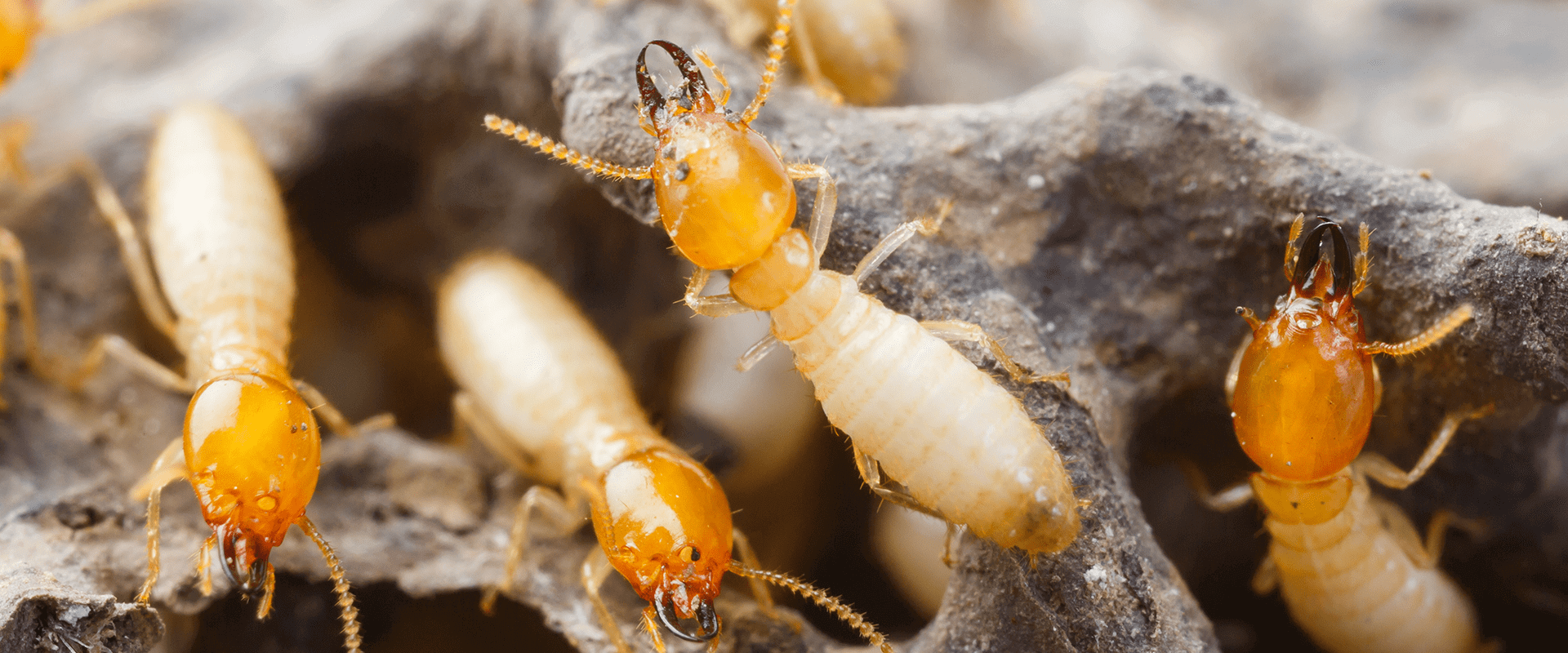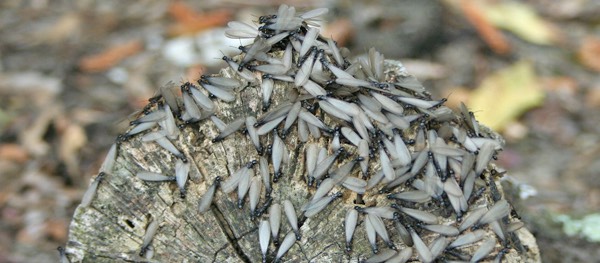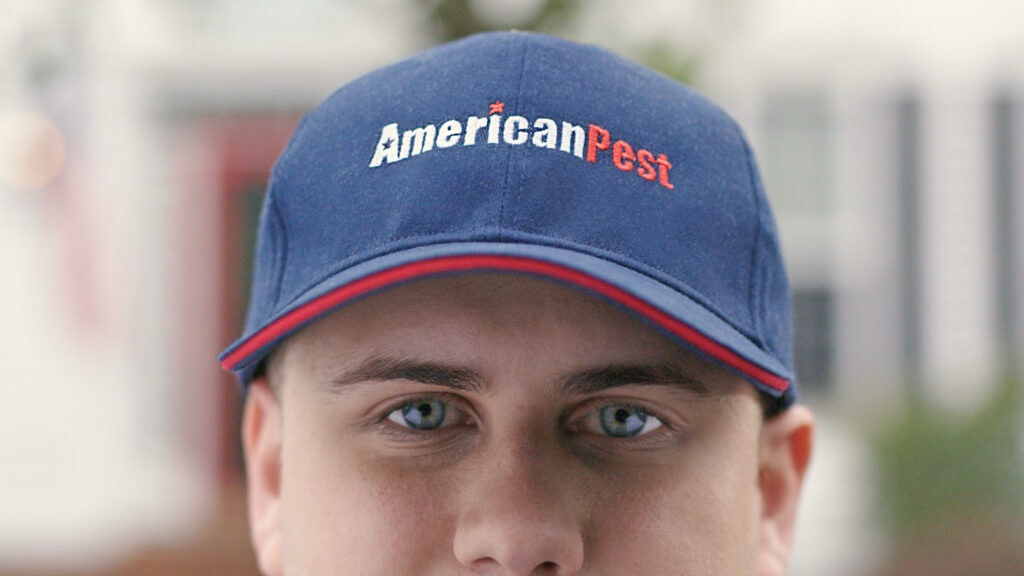Seeing Termites? Are Ready For Termite Season In Maryland?

Spring is upon us and the world is bursting with new life. Flowers are blooming, trees are full of beautiful buds and leaves, and everything feels fresh and new.
Like the vegetation, many animals are also bringing new life into the world, and although everyone loves to see baby birds and bunnies, fewer are excited to see the return of problem insects.
With spring being termite season in Maryland, here’s how to tell if you are ready for it.
What Is Termite Season?
When you hear the term “mosquito season” you know that the speaker is referring to the time of year when mosquitoes are active.
The exact length of mosquito season will vary with the weather but typically runs from April through October.
The time between November and March is not mosquito season, so you know that during these colder months, you won’t be bothered by these biting insects because they’re not active during this time.
Because of this typical understanding of seasons, when you hear the term “termite season”, you probably think the same rules apply.
If termite season was a specific length of time that termites were active, like from April through October, you wouldn’t have to worry about them during their “off-season” for the rest of the year.
Unfortunately, that is not the case.
Termite season does not refer to a particular time of year when termites are active. The truth is that termites are active all year long.
Instead, termite season refers to the time of year, usually in the spring, when termite swarmers come out in the open to reproduce.
Although termite season varies based on the species of termite, here in Maryland, DC, and Virginia the most common termite is the subterranean termite. Subterranean termites typically swarm in the spring, most often on a mild day with little wind after it has rained.
What Are Termite Swarmers And Termite Swarms?
Termite colonies are structured in a caste system. The queen and king are at the top of the caste and are responsible for reproducing within the colony.
There are worker termites that are responsible for all the day-to-day activities that take place in the colony. These duties include gathering and distributing food, taking care of the young, building and maintaining the tunnels and nests, cleaning, and more.
Soldiers are responsible for guarding the colony and keeping it safe from intruders.
Then there are the reproductive members of the colony that aren’t the queen and king. Reproductive termites are the only termites with wings.

Their bodies are uniquely designed to withstand the elements, mainly sunlight and outside air, that would kill the worker and soldier termites. Reproductive termites stay in the colony until they reach maturity.
At this time, they leave the colony in a large termite swarm to go out into the open and find a mate. That’s why reproductive termites are often referred to as termite swarmers.
What Do Termite Swarms Look Like?
If you happen to be in the right place at the right time to see a termite swarm, you won’t need to worry about overlooking or missing it.
Termite swarmer’s come out in a group of hundreds or even thousands, so their presence is hard to miss.
Termite swarmers look very similar to large flying ants. They have long dark bodies, antennae, and wings.
If you’re unsure of what insect you’re seeing, try to get a closer look. Termite swarmers have a few key differences in their appearance from flying ants.

First, they have broad waists while ants have pinched, segmented waists. Second, termites have straight antennae while ants have bent antennae. Finally, termites have two sets of equal length wings while ants have two sets of wings that are different lengths.
Once out in the open, termite swarmers will go about their business of finding a mate.
After pairing up, they’ll drop their wings and go back underground to begin their own colony. Because they don’t keep their wings, it’s possible to discover a termite swarm after they’ve completed their duties and are no longer out in the open.
If you find a large pile of discarded wings, it’s a positive sign that a termite swarm recently occurred.
Are Termites Active During Winter?
Termites can remain active all winter long due to the heat, food, and water that your home provides them.
Termite activity inside your house may even increase during the winter, because the termites have nowhere else favorable to go.
Yes, termites stay active throughout all seasons and temperatures, so it’s important to take precaution with yearly inspections or a prevention plan.
What Damage Do Termites Cause?
When out in the wild, termites play an important role in the ecosystem. They help with the decomposition of fallen, dead, and rotting trees, which helps create rich soil and generate healthy, new growth.
However, when termites get into your home, they are not helpful in the least. Termites eat wood, so they’ll spend all their time in your home eating away at the structural elements of your house.
What’s especially problematic about termites is that they are rarely noticed when they first get into your home.
In fact, they can go for months or even years without being seen. Other than the termite swarmers, which only come out once a year, termites stay underground or within your walls, making them extremely difficult to identify.
All the time that they go unnoticed in your house is time that they will spend destroying your house. The longer they go unnoticed, the more tunnels they’ll dig and the larger their population will grow.
If a termite infestation goes too long without being noticed, it can damage the structural integrity of your house.
In some situations, a termite-infested home is no longer safe to live in due to the extent of the damage.
How Can You Prevent Termites?
Although they will infest a home with sound, dry wood, termites prefer water-damaged wood. That’s why it’s essential to make sure that your home does not have excess moisture in or around it.
Creating good drainage, eliminating areas of standing water, and keeping humidity low are all good ways to avoid moisture problems.
You should also check under sinks, in basements, attics, and crawl spaces for water leaks, and immediately repair any that you find.
If the water leak causes damage to any surrounding areas, be sure to replace all damaged parts.
The most effective way to prevent termites is to be proactive by installing a termite control system. American Pest is a leader in termite prevention and elimination.
Our termite control systems work 24/7 to protect your house against these wood-destroying insects.
What Signs Do Termites Leave Of Their Presence?
Often the first visible sign of a termite infestation is a termite swarm. This is the only time you’ll see termites out in the open, and because the swarms are often so large, it’s hard to miss one when it happens.
Unfortunately, if you do see a termite swarm or the discarded wings afterward, it not only means that termites are present nearby, but also that the colony that released the swarm is already large and well-established.
Furthermore, since a swarm just occurred, it also means that a bunch of new colonies are in the process of being formed, which puts your house at an even greater risk.
Ideally, if termites are present, you’ll discover them as early as possible, but this is not an easy task. Because they live out of sight, they leave few signs of their presence.
If you look carefully, these are the signs you may discover:
⭐ Mud tubes.
Mud tubes are pencil-width tunnels made of mud that termites sometimes use to get from one location to another if they have to leave the ground to get where they’re going.
Most termites are unable to survive out in the open, so they build these tubes to protect themselves from the light and the air. You’ll typically find mud tubes along your foundation walls, both inside and outside.
⭐ Small holes in wood.
If you carefully inspect the wooden elements in your house and find tiny holes in the wood, it could be a sign that termites are inside.
Termites like clean living quarters, so they’ll make holes to the outside to push out debris and excrement.
⭐ Frass.
Frass is the termite excrement. It looks similar to sawdust and is usually found in small piles below where you find holes in the wood.
⭐ Hollow-sounding wood.
If you knock on the wooden structures in your house and they sound hollow, it could be a sign that extensive tunneling has been done within the wood.
⭐ Bubbling paint or wallpaper.
If you notice areas of your paint or wallpaper starting to bubble out, it could be a sign that termites are present. It could also be a moisture problem, but either way, you’ll want to get it checked out.
⭐ Bulging walls, sagging ceilings, or buckling floors.
Any of these signs in your house indicate a well-advanced termite problem.
⭐ Termite swarm.
As already mentioned, seeing a termite swarm is a sure sign that termites are either already in your house or very close by.
Why DIY Termite Control Fails
Now, you may think that you can just take care of termites if they show up inside your home.
The problem with that is that you may never see a termite or see any signs of termites, even if they are there.
Silently, they eat wood throughout your home, reproduce, and grow in numbers. They do create visible mud tubes leading to the wood that they are infesting, but these may be in the darkest recesses of your basement, and are easily missed.
They can also leave behind “frass” which is a fine powdery feces of termites. Still, you may not see these signs before it’s too late.
The structure of your home could be at risk, and termite damage can be very costly to repair. They can weaken structural beams, bow ceilings and floors, and even warp walls.
They can also begin to damage personal items like furniture as well. The best course of action is to enlist in a year-round termite control plan in your area.
What Should You Do If You See Signs Of Termites?
If you see any signs of termite activity in or around your home, you must take immediate action.
The faster you can eliminate the problem, the less damage the colony can do to your Maryland home. Termites will not go away on their own, and the colony will only grow bigger with time.
When you contact American Pest, we’ll visit your home to conduct a thorough termite inspection. Our service professionals are termite experts and can identify the signs of a termite infestation that the untrained eye might miss.
American Pest is also certified to install and maintain the Sentricon® System with Always Active™.
Sentricon® with Always Active™ is a termite baiting system with bait that is scientifically proven to be more attractive to termites than wood cellulose.
Once the bait stations are installed in the soil around the perimeter of your home, they work constantly to eliminate active infestations and prevent new ones from occurring.
We monitor the stations regularly and we guarantee the elimination of active colonies and the prevention of new infestations.
If you see a termite swarm this termite season or have other reasons to believe that termites are in or around your Maryland home, contact American Pest. We’ll protect your home from the problems termites cause. We guarantee it.
Request Your Pest Control Estimate
Related Posts
Contact Us Today!
Do you need an estimate for service or have questions about pests? We’d love to hear from you!
Fill out the form and receive feedback today. For immediate service, please give us a call!
